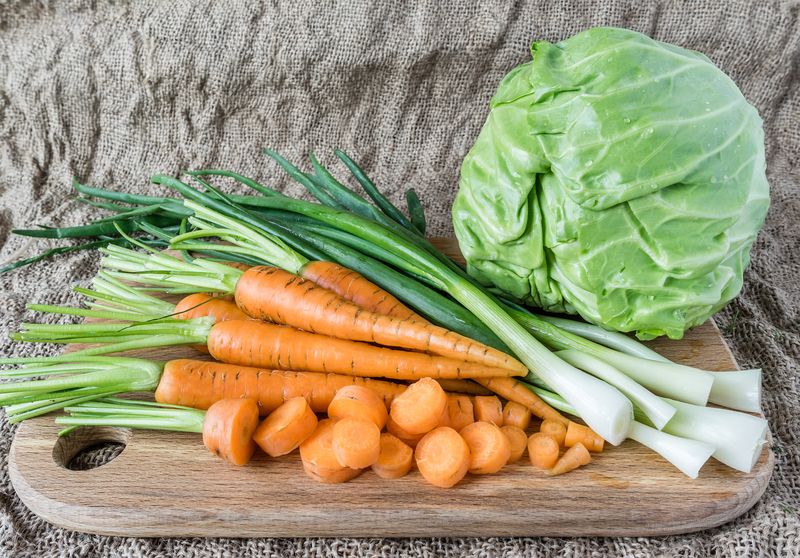Crafting a Welcoming and Safe Garden for Little Ones
Posted on 03/09/2025
Crafting a Welcoming and Safe Garden for Little Ones
Creating a warm and inviting garden where children can play, explore, and learn is a dream for many families. However, ensuring it is safe is just as important as making it engaging. This comprehensive guide delves into kid-friendly garden ideas and provides top tips for designing a safe outdoor haven for little ones. If you're seeking to establish a play sanctuary where your children and their friends can thrive, read on for advice on crafting a safe and welcoming garden for children.
Why Create a Child-Friendly Garden?
A garden that welcomes and protects young explorers offers numerous benefits:
- A place for healthy, active play: Outdoor time supports physical development and gross motor skills.
- Learning environment: Kids can connect with nature, gaining knowledge about plants, insects, and life cycles.
- Encouragement of creativity: Gardens inspire imaginative games and creative exploration.
- Family bonding: Outdoor spaces bring families together for planting, playing, and relaxing.
- Boosted wellbeing: Regular outdoor play enhances mood, reduces anxiety, and strengthens immune systems.

Essential Principles for Crafting a Safe and Welcoming Garden for Kids
When designing a child-safe backyard, balance is key. You want a garden that stimulates, invites adventure, and grows with your children, but also keeps hazards and risks at bay. Here's how to weave fun and safety into your landscape.
1. Plan the Layout with Visibility in Mind
Supervision is vital when children play outdoors. Design your garden so you can easily see key play areas from your kitchen window or patio. Avoid high fences, dense shrubbery, and hidden corners that could block your view.
- Open lawns are perfect for games and picnics
- Keep play structures in sight of main seating areas
- Use low-lying hedges or ground cover near the house
2. Choose Child-Safe, Non-Toxic Plants
Not all garden plants are safe for children. Many popular species are poisonous if ingested or can cause skin irritation. For kid-friendly garden plant choices, prioritize:
- Edibles: Strawberries, blueberries, tomatoes, carrots, beans and herbs
- Non-toxic ornamentals: Sunflowers, marigolds, pansies, calendula, snapdragons, violets
- Fragrant favorites: Lavender, mint, lemon balm
Avoid: Foxglove, monkshood, oleander, daffodil bulbs, yew, lily of the valley, and laburnum. Always double-check plant safety before introducing new varieties.
3. Minimize Hazards & Create Soft Landing Surfaces
Protect young ones from injury by using soft ground materials in play zones. Replace concrete and stone with:
- Safety-certified play bark
- Rubber mulch or mats
- Synthetic turf with shock-absorbent underlay
- Dense, soft natural lawn
Cover sharp edges on retaining walls or raised beds with padded corners. Carefully position urns, pots, and stone features away from busy paths and play equipment.
4. Secure Water Features
Water poses one of the most serious safety risks in family gardens. If possible, avoid including ponds, fountains, or water troughs in areas used by little ones. If you have existing features:
- Install secure mesh covers over ponds or use raised water tables
- Fence or plant thick barriers around larger water areas
- Ensure all hose pipes, buckets, and watering cans are emptied and stored safely
Tip: Offer a dry/sand play area or shallow splash pool on hot days (with constant supervision).
5. Use Safe, Natural Materials
For paths, edging, beds, and play structures, favor natural, sustainable materials that are free from splinters, toxic paints, or preservatives. Recommended products include:
- Smooth timber, protected with non-toxic oils
- Bamboo, flexibly used for fences or dens
- Stone, brick, or pea gravel - but check for choking hazards
Avoid old railway sleepers treated with creosote or suspected of harboring asbestos or lead-based paint.
Transformative Elements for a Welcoming, Playful Space
Safety first, but a magical garden experience should engage all of your child's senses and create memories that last a lifetime.
Install Inviting Play Zones
Children's gardens are more engaging when every corner invites discovery. Consider including:
- Adventurous climbing frames with ropes, tunnels, and slides
- Gentle swings and hammocks secured between sturdy trees
- A mud kitchen or mini outdoor "cafe" area for potion making and imaginative cooking
- Hidden fairy houses in flower beds or along pathways
- Loose-parts play areas with pebbles, planks, buckets, and logs
Encourage Gardening Together
- Create a children's vegetable patch where they can sow seeds and care for crops
- Install raised beds for tactile planting and easier access for toddlers
- Offer their own set of child-sized, lightweight tools
Gardening as a family helps kids understand where food comes from, patience, and responsibility.
Bring in Sensory & Wildlife Features
A child-friendly garden should delight the senses:
- Sound: Windchimes, rustling grasses, and bug hotels
- Sight: Bright flowers, winding paths, cheerful garden ornaments
- Touch: Lamb's ear, fuzzy felty plants, sandpits, water-table play
- Smell: Fragrant herbs, night-scented stocks, scented pelargoniums
Attract butterflies, bees, and ladybirds with pollinator-friendly plantings.
Sun Safety in Outdoor Play Areas
Sun safety is crucial for children, especially in summer. To protect little ones from UV rays:
- Plant fast-growing trees or install sun sails, umbrellas, or awnings
- Use playhouses and sheltered dens for shade
- Encourage hats, sunglasses, and sun cream application before outdoor play
- Designate a shaded eating/resting zone
Keep Boundaries Secure and Garden Activities Contained
Safe boundaries give peace of mind. To prevent wandering:
- Check that all gates and fences are at least 1.2m high and feature childproof latches
- Fill gaps beneath fences or walls with hedges or trellis
- Avoid planting hedges with thorns or toxic berries
- Discourage climbing near boundary lines with defensive planting or trellises
Tip: Mark the garden "entrance" with flower archways or a decorative gateway to underline boundaries for children.
Store Tools, Chemicals, and Adult Equipment Securely
Sheds, garages, and greenhouses are not play zones.
- Install high, lockable storage for tools, fertilizers, pesticides, and BBQ essentials
- Keep glass, wire, sharp, or power tools hidden
- Where possible, select childproof products and minimize chemical use
Consider Pets and Local Wildlife
If you share your garden with pets or attract urban wildlife:
- Hide or fence off compost heaps and pet waste bins
- Check for burrows or hiding places where animals might surprise little hands
- Introduce bee hotels, bird feeders, and amphibian refuges away from main play zones
Regular cleaning and monitoring reduce risks from animal droppings, parasites, or accidental bites and stings.
Maintain Your Child-Friendly Garden Regularly
A safe, welcoming garden for kids is a living, changing space. Run these safety checks every season:
- Inspect play structures and fix any broken equipment or loose fittings
- Mow lawns and watch for hidden holes or roots
- Remove fallen branches, sharp stones, or litter after storms
- Trim vegetation to keep sightlines open and reduce trip hazards
- Replenish soft play areas with new bark, sand, or mulch
- Aim to review plant safety annually, especially as your child's age and habits change

Designing Gardens for All Ages and Stages
As your children grow, their needs shift. Transform your family-friendly garden for multiple age groups:
- Toddlers: Sturdy fences, soft lawns, sensory planters, and sandpits
- Preschoolers: Roleplay corners, ride-on paths, raised beds to dig, and fairy trails
- Primary children: Treehouses, climbing walls, sports space, den building
- Teens: Sociable seating, fire pits, BBQs, lawn games, and mini-meadow wildlife zones
Inviting children's input into garden plans fosters engagement and pride.
Conclusion: Building Lifelong Memories in a Safe and Welcoming Garden
Crafting a welcoming and safe garden space for little ones is both rewarding and achievable. By balancing captivating play, sensory experiences, secure boundaries, and child-safe materials, your outdoor area becomes a cherished extension of your home. Not only does this nurture health, creativity, and eco-awareness--it weaves joyful memories for the whole family.
With a few thoughtful adjustments, your garden can become the ultimate playground for curious, adventurous, and happy children!
Keywords: welcoming and safe garden for little ones, child-friendly garden, crafting kid-safe outdoor spaces, safe garden design for children, kid-friendly gardens, children's play garden ideas, family garden safety, create welcoming play garden, outdoor safety children, family-friendly backyard, safe backyard play area

